SMILE Laser Eye Surgery
Smile Surgery In New York City
SMall Incision Lenticule Extraction (SMILE) is a procedure designed to correct nearsightedness using a new FDA-approved technique that reduces the normal risks of LASIK.
SMILE Eye Surgery NYC
PTERYGIUM & PINGUECULA FAQS
What is SMILE?
The smile laser eye surgery stands for SMall Incision Lenticule Extraction. This FDA-approved flapless refractive surgery is in the family of other laser vision correction surgeries like LASIK and PRK but operates under a completely different technique. Unlike LASIK and PRK, which involve creating a corneal flap or the complete removal of the epithelium- a thin layer of skin covering the eye- SMILE corrects refractive errors by creating a “lenticule,” which is removed by the eye surgeon. The lenticule is a contact-lens-sized piece of tissue whose removal changes the shape of the cornea. This change in shape is what causes the visual correction. The epithelium doesn’t need to be moved out of the way, like in LASIK and PRK, because the SMILE laser does not require direct contact with the deeper corneal tissue. The laser can harmlessly pass through the upper layers of the cornea and the epithelium to make incisions deeper in the cornea.
What is SMILE procedure?
The SMILE procedure uses a special Zeiss femtosecond laser, creating micro-air bubbles in the cornea to separate the lenticule. The surgery will be performed in a laser suite that houses the Femtosecond laser. Before the procedure begins, anesthetic drops will go into the eye to make the experience more comfortable.
The eye surgeon will then place a small ring around the circumference of the eye to keep the cornea in place before swiveling the patient under the laser. The laser then creates the lenticule and the cut in the epithelium. The surgeon makes sure the lenticule is entirely detached from the cornea and then removes it through the cut in the epithelium. After that, the remaining cornea is washed, and the procedure is finished. More drops may be put in the eye to encourage healing.
The surgeon may then prescribe additional eye drops for the patient to use daily. A check-up will be required the following day and then in the following weeks as well. Normal activity can be resumed the next day, but special care must be taken to prevent damage while the cornea is still sensitive.
Benefits of SMILE and Drawbacks
Like other laser-assisted visual correction techniques, the procedure involves using a laser to reshape the cornea. The visual acuity achieved after SMILE or LASIK appears to be equivalent. The differences emerge because the LASIK procedure and PRK disturb different areas of the cornea than SMILE. The most common post-operative problem with LASIK and
PRK is the feeling of dry eyes, which is due to the laser disturbing the corneal nerves. This complication is not seen as often in SMILE because there appears to be a higher rate of corneal nerve reinnervation, where the nerves correct themselves after the procedure. The lack of a LASIK-like flap in SMILE also avoids the danger of the flap moving or flipping up post-operatively, which is a rare, but severe complication that can occur if proper precautions are not taken.
The downsides of SMILE are its limited use and difficulty. Both nearsightedness, called myopia, and farsightedness, called hyperopia, are correctable via LASIK and PRK. SMILE can only correct myopia. SMILE is also a more technically challenging procedure, which means that it takes longer to perform. Your corneal health will determine the specific risks, and so it is essential to consult a doctor before making a decision.
Are you a good candidate?
The SMILE procedure can be an excellent option for those who do not want to deal with the risk of a corneal flap. Those with active lifestyles like contact sports, military careers, and others who risk being hit in the eye might prefer SMILE. The suitable candidate for a SMILE operation will be the following.
- Older than 22 with a stable prescription for more than a year
- The ideal candidate should have no more than -10 diopters of myopia and no more than 3 diopters of astigmatism. Myopia and astigmatism are measured in diopters, with a higher number indicating higher severity.
- Healthy eyes and corneas
Those with the following conditions should be wary of the procedure and consult a medical professional before deciding on SMILE.
- Those with unstable prescriptions
- Those with unhealthy eyes, including glaucoma, corneal abrasions, cataracts, scarring, or a history of eye infections
- Those with diabetes
- Those who are pregnant or nursing
- Those with unstable prescriptions
- Those with unhealthy eyes, including glaucoma, corneal abrasions, cataracts, scarring, or a history of eye infections
- Those with diabetes
- Those who are pregnant or nursing
WHY CHOOSE MANHATTAN EYE?

Why Manhattan Eye
Dr. Rapoport is an expert in refractive procedures, studying at the prestigious Massachusetts Eye and Ear Infirmary of Harvard Medical School. For this reason, she has intimate knowledge of the most recent advances in refractive technology, among these, the SMILE procedure. Dr. Rapoport takes meticulous measurements and calculations at your SMILE surgery consultation, and guides each patient to a well-informed individualized surgical plan, taking into account your specific ocular circumstances and visual goals.
“I've been essentially blind my whole life and recently decided to get elective eye surgery. I unfortunately did not qualify for Lasik, but did qualify for PRK.
Dr. Rapoport was fantastic - she explained all my options in detail and was very diligent in giving me instructions pre/post operations - even when I asked twice/three times. She's always available to talk and super empathetic. I could not recommend a better eye surgeon!”
Dr. Rapoport was fantastic - she explained all my options in detail and was very diligent in giving me instructions pre/post operations - even when I asked twice/three times. She's always available to talk and super empathetic. I could not recommend a better eye surgeon!”
M.V.
“Best eye doctor in New York! Dr. Rapoport is very personable, professional and most importantly a great doctor. Dr. Rapoport recently performed my LASIK surgery, for which she gave me clear pre and post-op instructions and made a point to check regularly on my progress. She did a great job to put my nerves at ease and walked me through the entire process. Now three weeks after the surgery I
can see better than ever with 20/20+ vision! I strongly recommend Dr. Rapoport if you are considering LASIK, or if you are simply in need of a great eye doctor.”
N.G.
“I have now seen Dr. Rapoport for dry eyes, removal of papillomas around my eyes, and Lasik
surgery. My experiences with her have all been wonderful. She always takes the time to
explain everything really clearly, and my results have all been great. When I originally asked
about Lasik, she gave me a very balanced perspective on my options, which I really
appreciated. She also has a great energy about her, and she's just an overall pleasure to be
around. I have referred several friends and family to her and they've all said great things about
her as well. I can't recommend her enough.”
M.T.
“After seeing Dr. Rapaport for three months I have experienced the greatest improvement for
my dry eye syndrome than I have in the past 15 years. Dr. Rapaport is very knowledgable and
caring. I am very grateful to her and her staff, in particular to Amy, who has been incredibly
helpful to me. Everyone here conducts themselves in a highly professional manner, and they
also run a tight ship in terms of timeliness. I have been seen every time without waiting any
more than 5 minutes, and this I appreciate a lot. I feel very fortunate to be a patient at this
medical practice.”
H.K.
“Dr Rapoport is a skilled, knowledgeable, sincerely caring medical professional. I started
seeing her a year ago and have since moved out of state. Regardless, it’s a priority for me to
continue under her good care.
I feel confident in her abilities - and it is my eyesight afterall!”
I feel confident in her abilities - and it is my eyesight afterall!”
P.J.




